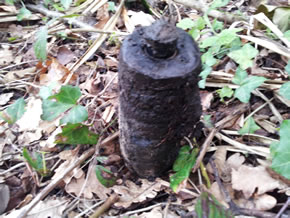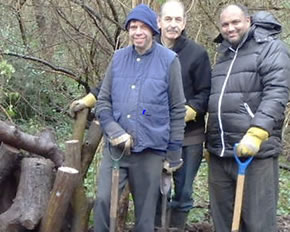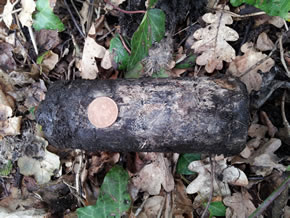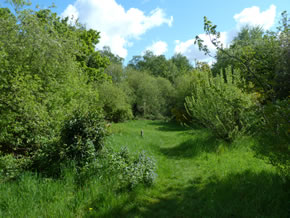Chiswick WW2 'Shell' Turns Out To Be Old Train Battery
Gunnersbury Triangle Nature Reserve ealed off while controlled explosion carried out
|
Volunteers digging stag beetle loggeries at Gunnersbury Triangle on Sunday, (April 6) unearthed a mysterious, heavy object which was feared to be a WW2 mortar round.
Police rushed to the scene, cordoned off the reserve and called Explosive Officers, who carried out a controlled explosion.
The object turned out to be part of an old train battery, composed of carbon with a metal core.

Reserve Conservation Officer, Helen Wallis said; "Gunnersbury Triangle has an interesting railway history, so we have a lot of train debris on the site. I suspected the object was a battery component, but called the Transport Museum who advised calling the police. The explosives officer said we'd done the right thing as shells can look similar if they are damaged, so I guess it's better to be safe than sorry"

Volunteers at the Triangle, Max (wearing blue hat) discovered the item
The triangular area now occupied by the reserve is surrounded by railways tracks, including the London Overground to the west, and the District Line to the south, and the now disused London and South Western Railway (LSWR) to the northeast. The Piccadilly Line, further north, crosses Bollo Lane close to the reserve's entrance. The site, which was formerly used as railway allotments, was bought from British Rail by Hounslow Council.

The nature reserve was saved from commercial development over thirty years ago when a vigorous campaign was launched in July 1983 by volunteers which led to a landmark decision to protect the reserve for wildlife. London Wildlife Trust has managed the site since 1985, and it was designated a Nature Reserve in 1987, offering free access to the site, school education sessions, family events and community volunteering opportunities.

Gunnersbury Triangle reserve
April 7, 2014